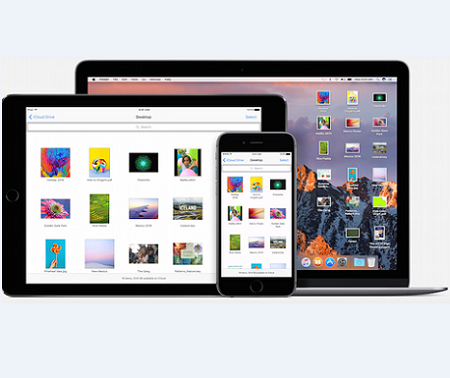iOS 10's App-Deleting Function Comes With A Catch
In iOS 10, Apple will allow iPhone owners to delete unwanted pre-installed apps for the first time. But you're not really getting rid of them.

iOS 10, MacOS, WatchOS Updates: WWDC Up Close
iOS 10, MacOS, WatchOS Updates: WWDC Up Close (Click image for larger view and slideshow.)
Nearly all phones include bloatware -- unwanted apps installed by the manufacturer or carrier. Apple's iPhone ships with a dozen or so junk apps that cannot be deleted. That's going to change once iOS 10 arrives in September. Apple will for the first time let iPhone owners delete those stock apps. This is sort of a big deal, but there's a disappointing catch.
Every time I set up a new iOS device, I create a folder called "Extras." That folder is chock full of Apple-made apps that I don't want or use. Some of them, like email and weather, have been replaced by third-party apps I think are better. Although I use Google's Gmail app on my iPhone, Apple's Mail app persists, hiding in that tucked-away folder. It's an eyesore more than anything else.
iOS 10 will finally make it possible to get rid of these apps, including Calculator, Calendar, Compass, Contacts, FaceTime, iCloud Drive, Mail, Maps, Music, Notes, Podcasts, Reminders, Stocks, Tips, Videos, Voice Memos, Watch, and Weather. The apps now appear in the iTunes App Store like any other app.
If you were looking forward to deleting apps and freeing up space on your iPhone, temper your enthusiasm. Apple SVP of software engineering, Craig Federighi, explained on The Talk Show that the apps aren't actually being deleted from the iPhone. Say what?
Let's say you download a weather app from the App Store. If you later decide that you no longer want it, you give a long press to the app icon to put it in jiggly mode so it can be moved or deleted. Tap the delete button, and away the app goes in its entirety. Apple says deleting its stock apps functions in the same way, but there's some software trickery at hand.
Rather than actually deleting the app, Apple is only deleting the app's user data and removing the icon from the home screen. The app binary itself will remain installed on the iPhone, even though it is hidden from sight. Federighi said all the Apple apps together take up only about 150MB of storage on the iPhone, so users wouldn't be saving all that much space any way. Anytime iPhone owners want to use a deleted stock app, they need only visit the App Store and re-download it.
[See 9 iPhone Hacks to Free up Storage Space.]
Why not fully delete the app? Security, according to Federighi. Apple verifies every complete build of iOS to ensure that it doesn't contain viruses or malware. Deleting the stock apps, which are part of the operating system image, would alter the base build of iOS and make it vastly more difficult for Apple to verify the security of the operating system.
There's another catch. When all the stock apps were first spotted in the iTune App Store, it stoked hope that Apple would begin to update them more frequently. That's not the case, says Federighi. As noted above, because the stock apps form the core operating system image, they can only be updated when the operating system itself is updated.
Bottom line, you can delete the app icons so you no longer have to look at them, but you're not freeing up any space on your iPhone.
About the Author(s)
You May Also Like
How to Amplify DevOps with DevSecOps
May 22, 2024Generative AI: Use Cases and Risks in 2024
May 29, 2024Smart Service Management
June 4, 2024








